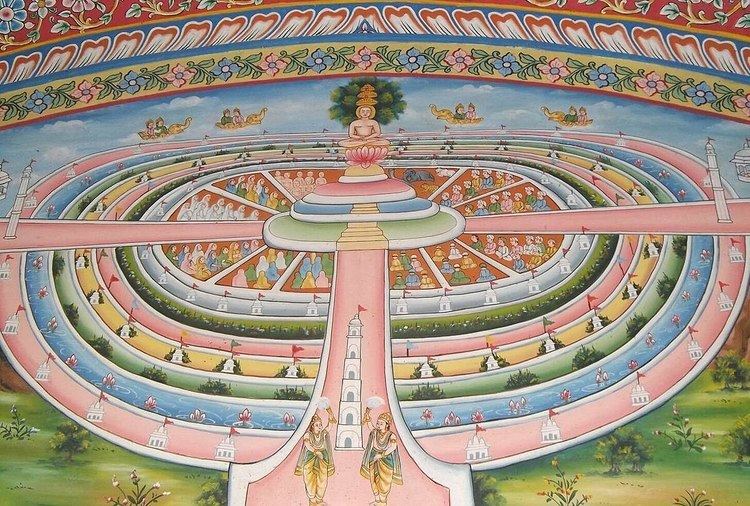 | ||
In Jainism, Samavasarana or Samosharana "Refuge to All" is a term for the divine preaching hall of the Tirthankara. The word samavasarana is derived from two words, sama meaning general and avasara meaning opportunity. A place where all have a common opportunity of acquiring the wisdom. The divine pavilion is built by heavenly beings (devas) after the tirthankara attain omniscience (Kevala Jnana). The theme of Samavasaranas has been popular in Jain art.
Contents
Hall
In samavasarana, the tirthankara sat on a throne without touching it (about two inches above it). Around the tirthankara sit the ganadharas (chief disciples). Living beings sit in the following order:
According to Jain texts, there would be four wide roads with four huge columns, Manasthamba (literally, pride pillar), one in each side. The total size of the hall varies depending upon the height of the people in that era. The size of Rishabhadeva's samavasarana was 12 km2 (4.6 sq mi).
Effects of the Samavasarana
In samavasarana, a tirthankara sits facing the east, but appears to be looking in all directions. Tirthankara sits on a soft cushion while preaching the Jain philosophy in plain terms. All humans and animals can understand the discourse. Jain scriptures say that all creatures who listen would become less violent and greed less. The speech of the tirthankara is distinctly heard by every one present.
